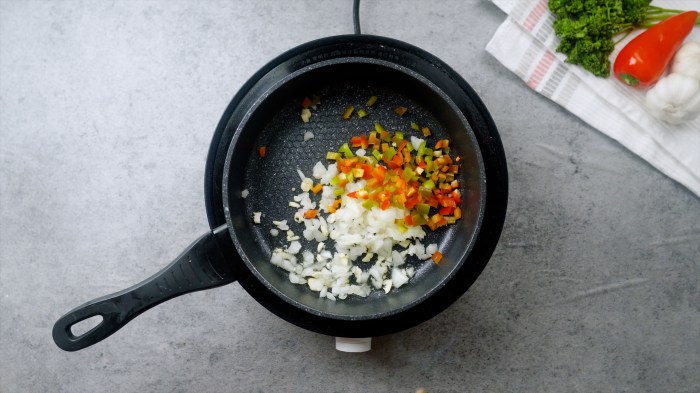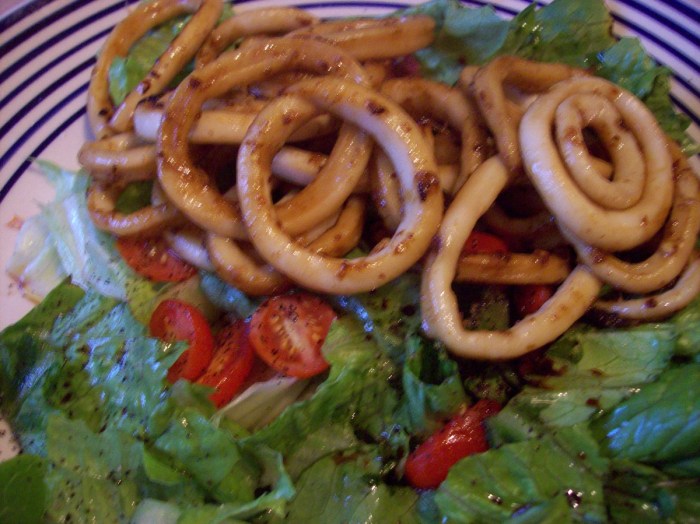Tips for Cooking Squid Japanese Style

How to cook squid japanese style – When it comes to cooking squid in the Japanese style, there are a few key tips to keep in mind. Firstly, it’s important to choose fresh squid that has been cleaned and prepared properly. This will ensure that your dish turns out tender and flavorful. Additionally, marinating the squid in a mixture of soy sauce, mirin, and ginger can help to enhance its natural flavors.
What Do You Mean by Japanese Style Squid?

Japanese style squid typically involves cooking the squid in a light and flavorful broth, such as dashi, along with vegetables and other ingredients. The squid is often cooked quickly to prevent it from becoming tough, resulting in a tender and delicious dish.
What is Known About Cooking Squid Japanese Style?
Cooking squid in the Japanese style is known for its simplicity and emphasis on fresh, high-quality ingredients. The delicate flavors of the squid are allowed to shine through, without being overpowered by heavy sauces or seasonings.
When it comes to cooking a turkey with a Spanish twist, there are a few key ingredients and techniques to keep in mind. One popular method is to season the bird with a mix of paprika, garlic, and olive oil before roasting it to perfection. For a step-by-step guide on how to cook a turkey Spanish style, check out this how to cook a turkey Spanish style recipe.
Solution for Cooking Squid Japanese Style
To cook squid in the Japanese style, start by preparing your ingredients and marinating the squid in a mixture of soy sauce, mirin, and ginger. Then, heat a pot of dashi broth and add in the squid, along with any vegetables or other ingredients you’d like to include. Cook the squid for just a few minutes until it is tender, then serve hot with a side of rice or noodles.
Detail Information on Cooking Squid Japanese Style
Cooking squid Japanese style is all about simplicity and fresh flavors. By using high-quality ingredients and cooking the squid gently in a light broth, you can create a dish that is both delicious and satisfying. The key is to not overcook the squid, as this can cause it to become tough and rubbery.
Describe in Depth How to Cook Squid Japanese Style
To cook squid Japanese style, start by cleaning and preparing your squid. Cut the squid into bite-sized pieces and marinate it in a mixture of soy sauce, mirin, and grated ginger for at least 30 minutes. In a pot, heat dashi broth until it comes to a simmer, then add in the squid and any vegetables you’d like to include.
Cook for 2-3 minutes, or until the squid is opaque and tender. Serve hot and enjoy!
When it comes to preparing a Thanksgiving turkey with a Spanish twist, there are several key ingredients and cooking techniques to keep in mind. One popular method is to marinate the turkey in a mixture of olive oil, garlic, and paprika before roasting it to juicy perfection. For a detailed guide on how to cook a turkey Spanish style, you can check out this comprehensive article: how to cook a turkey Spanish style.
Conclusion
Cooking squid Japanese style is a delicious and simple way to enjoy this versatile seafood. By following these tips and techniques, you can create a dish that is sure to impress your family and friends. So why not give it a try today?
FAQs: How To Cook Squid Japanese Style
1. Can I use frozen squid for this recipe?
It’s best to use fresh squid for the best results, but you can use frozen squid if that’s all you have available. Just make sure to thaw it completely before cooking.
2. What other ingredients can I add to the dish?
You can add vegetables like bell peppers, onions, and mushrooms to the dish for extra flavor and texture.
3. How can I tell when the squid is cooked?
The squid will turn opaque and firm when it is cooked through. Be careful not to overcook it, as this can make it tough.
4. Can I use a different type of broth?
You can use chicken or vegetable broth if you don’t have dashi available, but it may affect the overall flavor of the dish.
5. Can I make this dish ahead of time?
This dish is best served fresh, but you can prepare the ingredients ahead of time and cook them just before serving for the best results.



